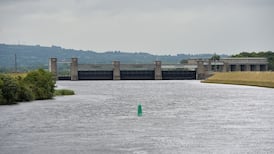High-tech fixes are the US cavalry of the climate change movie. The plot runs like this: when all else fails, especially arguments that we should change the consumer-capitalist system that got us into this mess, someone from a laboratory will come to our rescue. They will save the planet (or rather, our species) with the flick of a switch.
"In the long run the solution to global warming will have to be found in new technologies," economist John Fitzgerald wrote in this newspaper last March. He had previously reviewed, and more or less dismissed as politically toxic, solutions based on global carbon taxes and reduced consumption. Most humans, it seems, prefer the slightly deferred threat of planetary catastrophe to the clear and present danger of more taxes or less stuff.
Assuming Fitzgerald is right – and the disinclination of the parties at the Paris talks to come to any significant and binding agreement suggests he might be – what are the technologies?
They come in two categories: sources of energy and energy storage that can substitute for fossil fuels; and geo-engineering projects to cool the planet.
The first category is by far the most familiar and most already exist. They will all need further techno-fixes if they are to come close to feeding the escalating energy addiction of a rapidly expanding population.
They also all carry new environmental costs. The major technical challenge faced by even the best of them is storage.
We tend to forget that fossil fuels are not only sources of energy; they also store it until we want to use it. The common conundrum across the alternative energy sources spectrum is how to cheaply and effectively store the surpluses they produce, especially as most of them fluctuate widely in their rates of production.
Technologies for the better
:
Wind power
This sector has grown rapidly to produce more than 18 per cent of our electricity. Divergent claims are made for its cost efficiency and environmental friendliness, but it is the most successful and cleanest renewable energy option on our doorstep so far.
There are carbon costs in the construction of turbines and the building of access roads to farms. Disturbance to wildlife is a problem, though again experts differ on this question as they do on human health impacts. The inherent inconsistency of wind supply, storage and grid connectivity all remain issues.
Solar
Useful for small-scale use on individual projects, especially for water heating, the big challenge for solar is the creation of large-scale concentrated solar power stations.
There are concerns that vulnerable desert ecosystems will be severely damaged if solar takes off as a major global energy source.
To do so, however, major storage and connectivity challenges need to be met.
And the dream of a massive generation network running right around the Mediterranean has been shattered by the political crisis in the region.
Tidal
High potential at a limited number of sites worldwide. Environmental impacts are likely to be very significant and unpredictable. Storage and distribution challenges are significant.
Biomass
Basically, burning organic matter to produce energy within sealed systems, so that only limited carbon dioxide is released. Suggested by Bord na Móna as an alternative to peat, through mass cultivation of willow on cutaway bogs. Likely to have multiple negative environmental consequences, including inadvertent carbon dioxide release from the cultivation process, in this case.
Cold nuclear fusion
The holy grail of technophiles. Cold fusion could produce vast amounts of energy at much lower risk than nuclear fission and produces very little waste. The trouble is that no one knows how to do it
.
Technologies for the worse:
Carbon capture
A complex process that takes carbon from the air, converts it to liquid and pumps it deep into the earth. Feasible, but very expensive – and beware of earthquakes.
Iron in the ocean
Dumping iron sulphate into the seas to stimulate plankton blooms and draw carbon to the ocean floor. Experiments are in progress. But haven’t we caused enough problems in the oceans already?
Mimic volcanic eruptions
Pump sulphate particles into the atmosphere to darken the skies and cool the planet. A grim prospect, with unpredictable environmental consequences.
Cloud creation
A slightly less grim version of the above, using water participles instead of sulphate. And what would that do to the world’s climate, exactly? No one knows.
Mirrors in space
Put massive mirrors into orbit, giving the Earth a kind of cosmic sunshade. Don’t hold your breath.
If ecology teaches us one lesson, it is that everything in our world is connected to everything else. We inhabit a vast ecological equation where we still understand only a few of the variables. Embarking on wild techno-adventures will just throw petrol on the flames.
Alternative energy sources are vital to transitioning to a low-carbon economy and deserve more attention and resources.
But changing our consumer culture and restoring the vast areas of land we have degraded in recent centuries is the one sure and safe way of putting carbon back in the ground.
Paddy Woodworth is the author of Our Once and Future Planet: Restoring the World in the Climate Change Century, and contributes to the Weekend Irish Times environment coverage.










